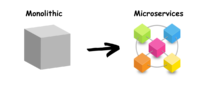Collaboration lies at the heart of successful software development. As teams work together to build complex systems, effective code collaboration becomes essential. In this guide, we’ll explore quick tips for seamless teamwork in code collaboration, ensuring that your development process is efficient, organized, and productive.
1. Establish Clear Communication Channels
Effective communication is the foundation of successful code collaboration. Establish clear channels for communication within your team. Utilize messaging platforms, such as Slack or Microsoft Teams, for quick updates and discussions. Additionally, schedule regular team meetings to address broader topics and ensure everyone is on the same page.
2. Use Version Control Systems (VCS) Efficiently
Version control systems, like Git, are the backbone of code collaboration. Familiarize yourself with the fundamentals of Git, including branching, merging, and pull requests. Create descriptive commit messages and use branches to isolate features or bug fixes. This ensures a clean and organized version history.
3. Clarify Coding Standards and Guidelines
Establish and document coding standards and guidelines for your team. Consistent coding styles make the codebase more readable and maintainable. Tools like ESLint or Prettier can automate the enforcement of coding standards, reducing the likelihood of stylistic inconsistencies.
4. Conduct Code Reviews Regularly
Code reviews are a crucial aspect of code collaboration. Regularly conduct thorough code reviews to catch potential issues, ensure adherence to coding standards, and share knowledge among team members. Encourage constructive feedback and use code review tools to streamline the process.
5. Automate Testing and Continuous Integration
Automate testing processes to catch bugs and ensure code quality early in the development cycle. Implement continuous integration tools like Jenkins, Travis CI, or GitHub Actions to automatically build and test your code with each commit. This practice helps identify issues promptly, preventing them from reaching the production environment.
6. Document Code and Processes Clearly
Clear documentation is essential for code collaboration, especially when onboarding new team members. Document your code comprehensively, including function descriptions, usage examples, and potential gotchas. Additionally, maintain documentation for project setup, development workflows, and deployment processes.
7. Utilize Code Collaboration Platforms
Take advantage of code collaboration platforms like GitHub, GitLab, or Bitbucket. These platforms offer features such as issue tracking, project boards, and integrations with various tools. Leveraging these platforms enhances collaboration by providing a centralized space for code hosting, issue tracking, and collaboration.
8. Hold Regular Team Retrospectives
Periodically conduct team retrospectives to reflect on your code collaboration practices. Discuss what’s working well, identify areas for improvement, and collaboratively find solutions. Retrospectives promote a culture of continuous improvement, fostering a more effective and cohesive team.
9. Encourage Knowledge Sharing Sessions
Promote knowledge sharing within your team through regular sessions or workshops. Encourage team members to share insights, discuss recent challenges, and present new technologies or tools. Knowledge sharing enhances the collective expertise of the team and fosters a collaborative learning environment.
10. Cultivate a Positive and Inclusive Culture
Code collaboration thrives in a positive and inclusive culture. Foster an environment where team members feel comfortable sharing ideas, asking questions, and providing feedback. Celebrate achievements, acknowledge contributions, and ensure that everyone’s voice is heard in the collaborative process.
Conclusion
Seamless code collaboration is a hallmark of high-performing development teams. By establishing clear communication channels, using version control systems efficiently, clarifying coding standards, conducting regular code reviews, automating testing, documenting code and processes, utilizing code collaboration platforms, holding retrospectives, encouraging knowledge sharing, and cultivating a positive culture, your team can achieve a new level of productivity and effectiveness in software development.








